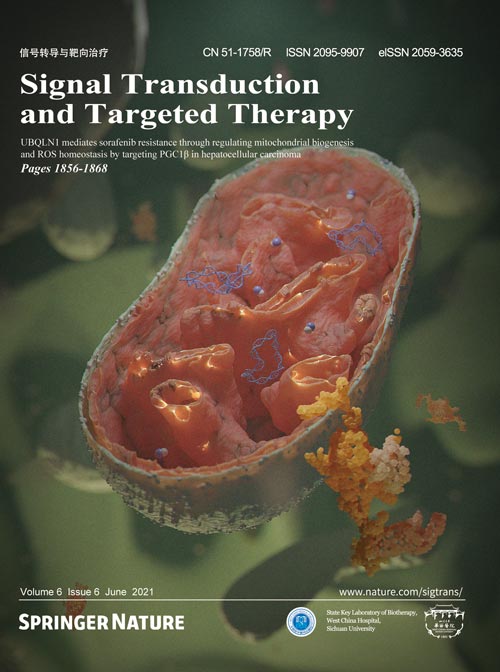Volume 6 Issue 6, Jun 2021:
Article
Rapid isolation and immune profiling of SARS-CoV-2 specific memory B cell in convalescent COVID-19 patients via LIBRA-seq
Bing He,Shuning Liu,Yuanyuan Wang,Mengxin Xu,Wei Cai,Jia Liu,Wendi Bai,Shupei Ye,Yong Ma,Hengrui Hu,Huicui Meng,Tao Sun,Yanling Li,Huanle Luo,Mang Shi,Xiangjun Du
ORCID: orcid.org/0000-0001-8184-8430,Wenjing Zhao,Shoudeng Chen,Jingyi Yang,Haipeng Zhu,Yusheng Jie,Yuedong Yang
ORCID: orcid.org/0000-0002-6782-2813,Deyin Guo
ORCID: orcid.org/0000-0002-8297-0814,Qiao Wang,Yuwen Liu,Huimin Yan
ORCID: orcid.org/0000-0002-7243-8429,Manli Wang
ORCID: orcid.org/0000-0001-8701-3530 &…Yao-Qing Chen
ORCID: orcid.org/0000-0002-4659-1550
B cell response plays a critical role against SARS-CoV-2 infection. However, little is known about the diversity and frequency of the paired SARS-CoV-2 antigen-specific BCR repertoire after SARS-CoV-2 infection. Here, we performed single-cell RNA sequencing and VDJ sequencing using the memory and plasma B cells isolated from five convalescent COVID-19 patients, and analyzed the spectrum and transcriptional heterogeneity of antibody immune responses. Via linking BCR to antigen specificity through sequencing (LIBRA-seq), we identified a distinct activated memory B cell subgroup (CD11chigh CD95high) had a higher proportion of SARS-CoV-2 antigen-labeled cells compared with memory B cells. Our results revealed the diversity of paired BCR repertoire and the non-stochastic pairing of SARS-CoV-2 antigen-specific immunoglobulin heavy and light chains after SARS-CoV-2 infection. The public antibody clonotypes were shared by distinct convalescent individuals. Moreover, several antibodies isolated by LIBRA-seq showed high binding affinity against SARS-CoV-2 receptor-binding domain (RBD) or nucleoprotein (NP) via ELISA assay. Two RBD-reactive antibodies C14646P3S and C2767P3S isolated by LIBRA-seq exhibited high neutralizing activities against both pseudotyped and authentic SARS-CoV-2 viruses in vitro. Our study provides fundamental insights into B cell response following SARS-CoV-2 infection at the single-cell level.
